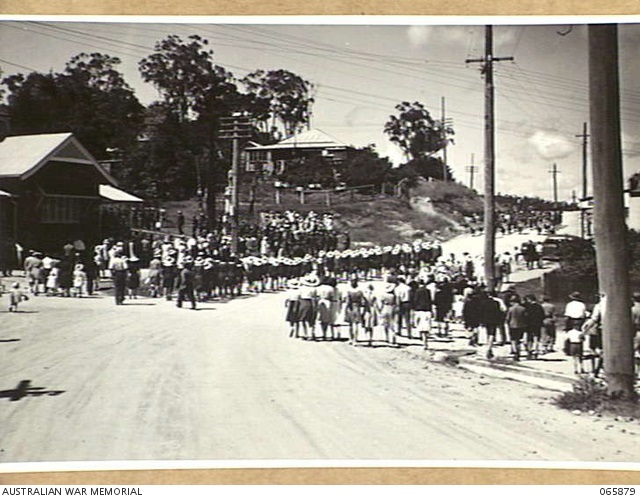All public occasions develop their own style and pitch (and Anzac Day is no exception) but perhaps we had not thought that Anzac Day needed a guide to how it should be presented. Such a guide exists and it is available online. (A centenary 2015 edition is now available.)
 The Anzac Day Media Style Guide 2014 is an update of a publication that first appeared in 2012. The Guide’s author is Dr Sharon Mascall-Dare, it is supported by the University of South Australia and Monash University and is available online from Verandah Press, free to bona fide journalists (or $7.95 to the public). It has an advisory board of historians and journalists and a foreword from Professor Peter Stanley.
The Anzac Day Media Style Guide 2014 is an update of a publication that first appeared in 2012. The Guide’s author is Dr Sharon Mascall-Dare, it is supported by the University of South Australia and Monash University and is available online from Verandah Press, free to bona fide journalists (or $7.95 to the public). It has an advisory board of historians and journalists and a foreword from Professor Peter Stanley.
The Guide runs to around 60 pages – regularly updated – and it covers Anzac basics, history, terminology, protocols, story angles, military organisation and military history. It ‘aims to be independent, collaborative and objective: it does not represent the view of a single organisation or individual. Although it includes contributions from official sources (e.g. the Department of Veterans’ Affairs) it does not claim to be an “official guide”.’
Interviewed for Honest History, Dr Mascall-Dare recalls that the genesis of the Guide was in her doctoral thesis on journalistic practice regarding Anzac Day and the forthcoming Anzac centenary. She interviewed some thirty journalists and found evidence of a lack of adequate briefing about Anzac, particularly among the younger journalists who were often given Anzac assignments. Anzac was often seen as a ‘repeat story’ suitable for less experienced journalists, but these journalists, wary of making mistakes in an area steeped in tradition and myth, tended to resort to ‘cut and paste’ treatment while still being baffled by military terminology.
For journalists [says the Guide], Anzac Day has also become a media ritual. Every year, there are weeks of build-up followed by intense coverage on the day itself. Anzac Day has evolved into a “season” with book launches, commentary pieces and documentaries as well as news reports. The challenge for journalists is what to say. How do you report on Anzac Day, year after year, and find something new?
‘There was’, says Mascall-Dare, ‘an opportunity to provide journalists with a reliable resource’ which also included important context and suggested new angles. She goes on to say that the reaction to the Guide since its first publication has been ‘very, very positive’. Users recognised it was ‘not just a style guide but advice on a very difficult, complex subject’. Young journalists themselves had pointed to the need for advice on appropriate protocols for settings like the Dawn Service. The RSL, the Australian War Memorial and the Guide’s expert panel had helped with advice but journalists themselves had been central to deciding what needed to be covered in the Guide.
Since 2012, there has been ‘massive uptake’ of the Guide, with around two hundred inquiries from journalists during 2014. Mascall-Dare suggests there have been fewer ‘template’ or cliché Anzac stories during that period although it is obviously difficult to attribute changes to the Guide alone. The Guide gives an example of how a template story commences:
A crowd of 40,000 people attended this year’s dawn service at Melbourne’s Shrine of Remembrance despite early morning rain. RSL spokesman (INSERT NAME) said attendance figures showed the Anzac spirit was still important. “The Anzac spirit is alive and well …”
The Guide then canvasses a number of alternative ways for journalists to approach Anzac stories. Questioning the traditional narrative is one angle but Mascall-Dare believes ‘there are multiple possible frames, a multiplicity of narratives that are more representative and authentic than repetition of the traditional white Anglo-Saxon bush narrative’. There is great potential for a multicultural angle in Anzac stories. ‘It is not “either/or”; it should be “both/and” … “A century of service” can also be seen as a century of transformation.’
The Guide includes a glossary, contacts and sources, further reading and key websites (including a link to the Honest History site). Feedback from users is welcomed. As Professor Stanley says in his foreword, the high current profile of Anzac ‘makes the media’s independence, clarity and accuracy more important than ever … [The Guide] represents a welcome attempt to pragmatically recognise the media’s importance in presenting Anzac Day in contemporary Australia.’
 Girls of St Mary’s school following the troops of HQ, 6th Division, Herberton, Queensland, Anzac Day, 1944 (Australian War Memorial 065879/Geoffrey McInnes)
Girls of St Mary’s school following the troops of HQ, 6th Division, Herberton, Queensland, Anzac Day, 1944 (Australian War Memorial 065879/Geoffrey McInnes)
The relationship between journalists and war as war happens rather than when it is being commemorated is addressed in a number of resources on this site.
2 December 2014 (updated 2 March 2015)